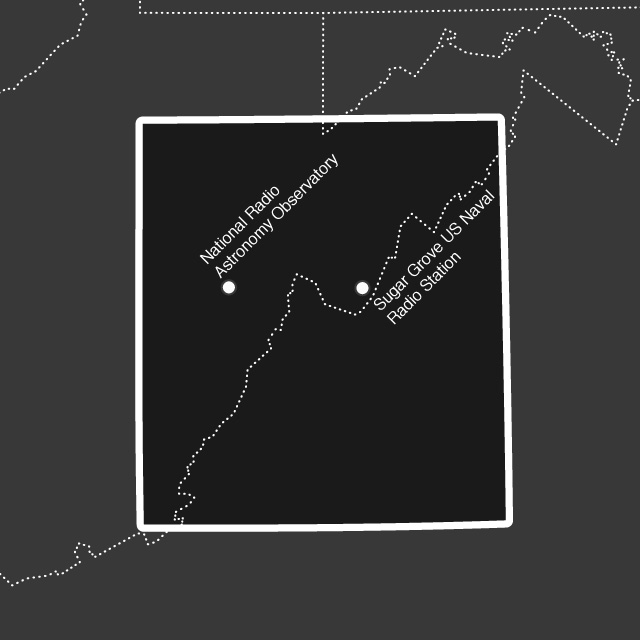The United States National Radio Quiet Zone (wikipedia article) is fascinating, and is an evergreen topic being featured in wired (The Quiet Zone), the Daily (Nixed Signals), bOINGbOING (National Radio Quiet Zone a haven for people who say wireless signals make them sick) and now Al Jazeera, Escaping the radio smog:
While there are no studies which confirm that radio frequencies cause the symptoms discussed in the video, if the National Radio Quiet Zone is successful as a giant placebo and people can live their lives, then that is double-plus good.
What exactly is the US National Radio Quiet Zone? Glad you asked:
The astronomers who selected Green Bank as the site for the telescope in the mid-1950s chose carefully. The surrounding Allegheny Mountains provided a natural shield against radio and television broadcasts. Flanked by national forests teeming with black bears and wild turkeys, the area would remain undeveloped in perpetuity. And for all its physical isolation, it was only a day’s drive from many East Coast universities. Even back in the ’50s, though, farsighted scientists feared that radio-frequency emitters would eventually creep into the area. More aggressive protection would be necessary.
Thus, in 1958 the FCC set aside a rectangular-shaped territory the size of Massachusetts and Connecticut combined and called it the National Radio Quiet Zone, to be administrated by the National Radio Astronomy Observatory, a government-funded research facility in Charlottesville, Virginia. The NRAO later built other radio telescopes – in Socorro, New Mexico (the setting for the film Contact with Jodie Foster), and Tucson, Arizona – but it never again had the clout to impose quiet around them. Today, Green Bank is radio astronomy’s crown jewel. Over the years, the telescope has played a key role in understanding the behavior of pulsars, searching for extraterrestrial life, and probing the halo of hydrogen that surrounds the Milky Way galaxy. It’s one of the few facilities on the planet where radio astronomers can make observations at most points along the electromagnetic spectrum.
I think what makes this story interesting (and so evergreen) is both the extra-state nature of this zone, which spans three states, and the nature of the rules which must be followed inside an area of the US which is about as large as Massachusetts and Connecticut combined. Rules governed by the scientists, through the FCC, which virtually forces inhabitants to refrain from using many accouterments of “modern life” – or at the very least creating many workarounds to protect science. Because the rules are chiefly there to do two things: protect the scientific study of the cosmos, and to make electronic eavesdropping by many-acronym agencies possible.

